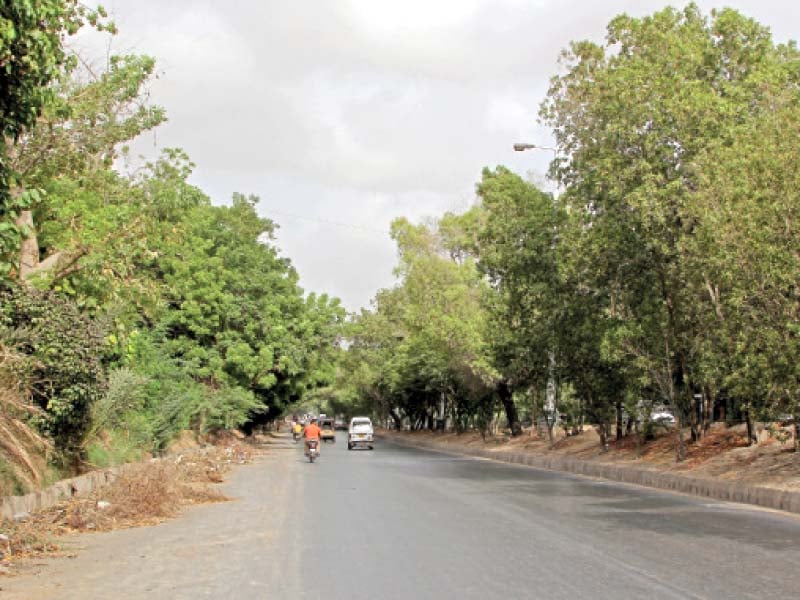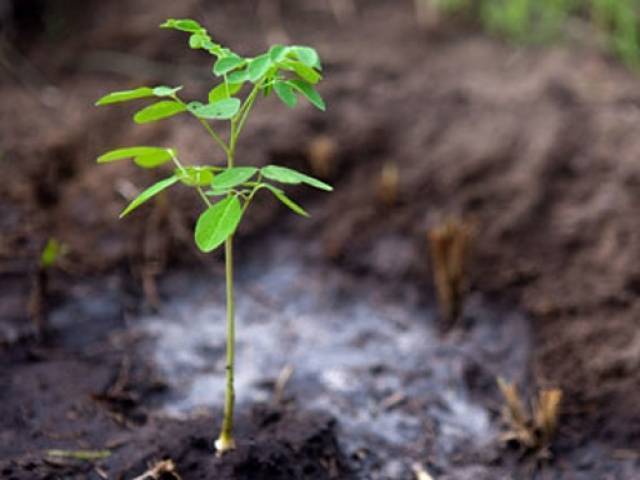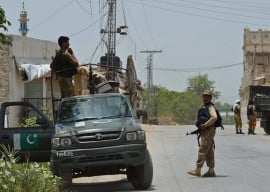
The group, comprising four young individuals, has begun an initiative, Saaya, to map biodiversity trends in urban centres. The project began in July, 2017 and, as of today, the team has mapped over 700 trees in 14 parks in District South, including some in parks of the old city area, Hill Park in District East and trees planted along various thoroughfares including Sharae Iran in Old Clifton area. Their aim is to map all the old trees in the city.
The Public Interest Law Association of Pakistan (Pilap), a society working for the promotion and protection of fundamental rights in Pakistan, is providing logistical support to the team for the pilot project.
The team
The co-founders of the Saaya initiative are Summaiya Zaidi and Noor Naina Zafar, who have studied law, Durreshahwar Alvi, an architect who teaches at Indus Valley School of Art and Architecture, and Fahad Zubair, who has studied computer science. The initiative brought together this diverse group of people who were not even friends before.
Islamabad mayor launches monsoon tree plantation drive
They believe that the city's decreasing tree cover, which now stands at less than 3%, needs to be addressed and it is this love for trees and the environment that allowed them to work side by side. During the tree-mapping project the team was joined by student volunteers from L'ecole, the Shaheed Zulfikar Ali Bhutto Institute of Science and Technology, Habib University and Hamdard School of Law.
The initiative
According to Zaidi, the trees that reside alongside humans are being brutally chopped down and the municipal agencies responsible for their welfare rarely if ever take action against this criminal act.
She explained that after collecting the data of the trees and their GPS locations, there is at least evidence of their existence if they are chopped down. At the moment, there is no documentation proving whether there was a tree at any given location even a day before.
Alvi said the initiative seeks to include all relevant stakeholders so that a research-based ecological solution is devised to ensure that new development moulds itself around the trees.
The Tree Club organises seminar on tree plantation, environment
If the team can identify the tree's species they note it down, otherwise they forward pictures of it to experts for identification.
Saaya is supported by the Horticulture Society of Pakistan, as well as by professors of the University of Karachi's botany department.
The initiative is not only to protect trees, but also to map their biodiversity trends, said Zaidi. She added that once their store of data increases they will be able to classify tree population according to its species and environmentalists will be able to determine the best and most viable tree to plant in Karachi.
Speaking about cornocarpus trees, Zaidi said initially they decided not to include its population in their data, due to its quick and aggressive growth, but then they realised that mapping these trees will help people understand the lack of biodiversity in Karachi, as the real number of this species will also be catalogued for the first time. At the end of the day, these trees also provide shade to residents of the city, she explained.
The team has been contacted by a number of people interested in joining their campaign, which, according to Zafar, is very encouraging for them. They want to expand their work with the involvement of other residents, making it a community-wide effort, she said.
100,000 trees to be planted in District Central by 2017 end, says DMC chairperson
While working we often see couple's names carved into tree trunks and taveez hanging from branches, said Zafar.
She added that people often give them strange looks, as they do not understand why their group has crowded around a tree and is examining it. We are committed to our work and hope to see it help protect the existing trees of the city and spread understanding about the lack of tree diversity, she said.
The process
Zubair handles the technical side of the project along with the mapping. He explained that they have developed an application and website only accessible to them at the moment where they save the data they record.
He shared that they use mobile phone GPS systems as well as professional GPS devices to accurately map the locations of trees. He said that the initiative is still at its pilot level and they are learning as they go. We have a few small technical bugs that will be fixed soon, said Zubair. Then the application and website will be accessible to everyone, free-of-cost, so that we can all work together to protect Pakistan's urban biodiversity framework, he said.
The praise
Saaya is being lauded by environmentalists and horticulturists throughout the city. Senior ecologist and horticulturist Rafiul Haq believes this is the first time trees are being mapped in the country. He said people will now become aware of the importance of trees, as the project will be beneficial for the future of the environment and tree cover in the city.
K-P surpasses international target of planting trees
He said what the team is doing is geo-tagging and documenting trees, which will be very useful as evidence.
Haq said that the best thing about the group is the involvement of multidisciplinary individuals, which will come to their aid in the future. He said that they have made a good start but they may face hurdles in the future when they start mapping trees in remote areas. However, he said they should view these issues as challenges rather than hurdles.
Haq also highlighted the importance of biodiversity and said that if the biodiversity of trees is maintained then it will bring about positive change to the ecosystem and we will see the return of several species of birds and insects that are no longer visible in the city due to the monocultural nature of tree plantation in the city.



























1714024018-0/ModiLara-(1)1714024018-0-270x192.webp)









COMMENTS (1)
Comments are moderated and generally will be posted if they are on-topic and not abusive.
For more information, please see our Comments FAQ